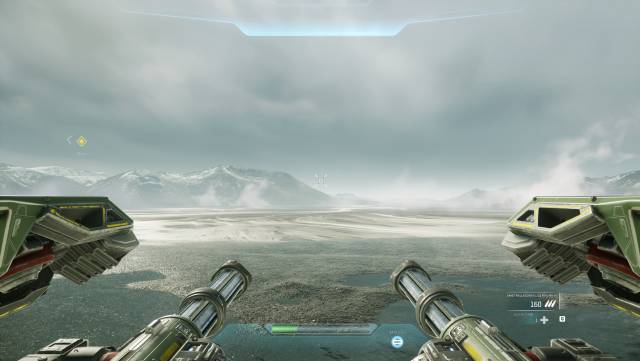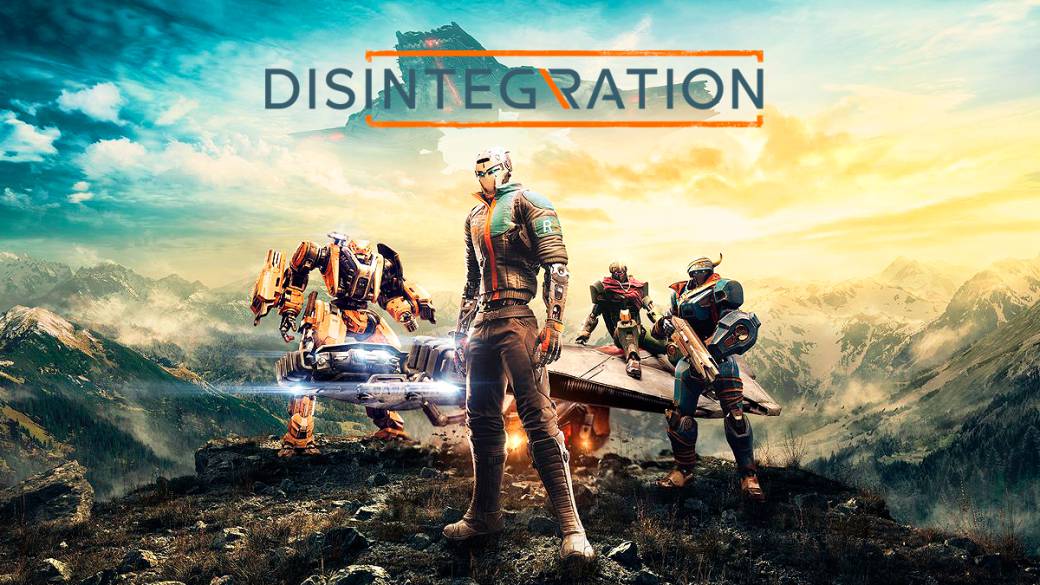
The mix of strategy and first person shooter comes with more shadows than lights in your campaign.
Disintegration was announced strongly. Having Marcus Lethos, one of the co-creators of Halo, behind him and being on the cover of the Edge as an exclusive announcement, gives him attention. It was first shown last year, we were able to test it at Gamescom and we had beta a few weeks ago. The result? A different proposal, which tries to mix the genre of the first person shooter with the strategy in real time and which ends up failing to stand out from everything it proposes. We analyze the campaign waiting to be able to test the multiplayer and definitely appreciate the new Lethos.
Romer is the protagonist of this adventure, which is located 150 years in the future where overpopulation, climate change and a general pandemic have left humans on the verge of extinction. The solution is to be able to implant the human brain in robotic bodies in an integration that allows them to be kept alive, but this has a high cost. The Rayonnenes, an armed faction, want technology to have a greater presence in this integration, while a small group of rebellious humans wants to prevent it. No to lobotomization. No to robots. This context, and a totally chaotic start where nothing is understood, serve as a pretext to put ourselves at the controls of Romer, who controlling a Gravicle, a kind of flying motorcycle, will try with other rebels to finish off the enemies.
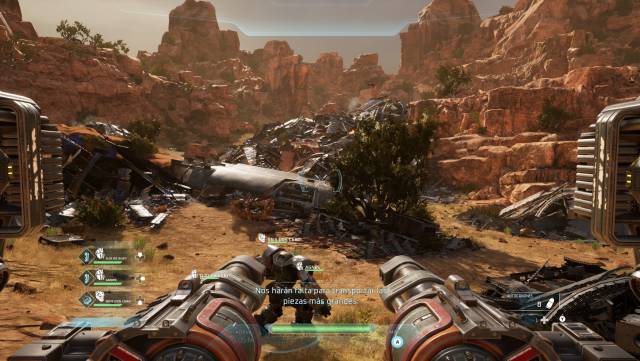
The story, despite its starting point, is lost in many moments, lacks interest in many others and is not understood in the others. In the end, it is clear that we are facing a fight against a large faction, that there is a certain moment for treason and redemption -with which we cannot connect because the ground is not prepared for it- and little else. The important thing is to carry out the missions that are being offered to us, 12 in total divided into four chapters that involve between 10 and 15 hours depending on the level of difficulty at which you are playing. But … What is Disintegration?
A mix that doesn’t fit
The game proposal is as follows. On the one hand we control the protagonist on board the ship, from which we can shoot two types of weapons and move with a small turbo. On the other hand, we have the units that accompany us, to whom we can give various instructions, such as to attack a specific enemy, to do some contextual action or to retreat and hide somewhere. Control with both keyboard and mouse and remote is simple. In the second case, the right part of the command and its upper buttons allow giving the RTS commands, while the left focuses on the control of our ship.
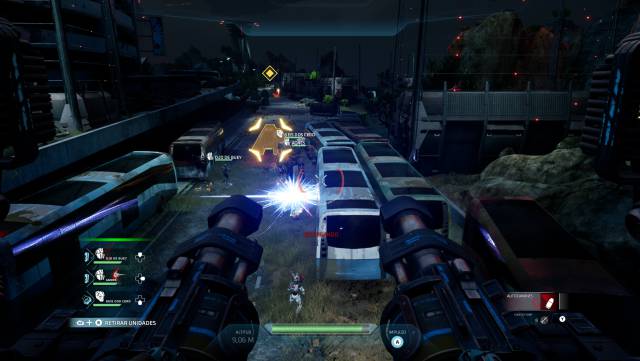
Each unit has an assigned ability that can be used after a cooldown. Some launch grenades that stun, others a field that slows down movement, another a shower of rockets, another creates a seismic impact on the ground. Abilities allow us to slow down and weaken enemies, which are automatically attacked by units and can also be fired by us. Submachine guns, rocket launchers, shotguns and other firearms are part of an arsenal for our limited-use ship: each level has an assigned weapon, and we cannot customize it, nor can we customize what kind of abilities we want to accompany us in missions.
The problem with Disintegration, in fact, is that the proposal is summarized in “yes, but not much”. It has the essence of a first person shooter on a ship, but its possibilities are limited. It has a strategy, but not much: the units are all in unison, you cannot assign different actions to each one of them and in the end, that ends up simply sinning in moments where it would be good for us to activate a tower, defend a position and open a chest of vitality, all at once with each unit spread out. This causes the game to have a flat development in the playable, with hardly any news or advances mission after mission.
And it is a pity, because the base is good and has wickerwork, but it is simple and has been exploited rather little. During the missions we will have different tasks to perform: deactivate a specific tower, eliminate generators, escort a load, or save innocent humans. They unfold before us and give meaning to our progress in a world that offers some destructible elements, but … not much. The enemies show different patterns and weapons, and new larger and harder units appear, with the flying ships and a certain large enemy – your particular Scarab? – the most demanding, but seen the enemies in the middle of the game, seen everybody. Yes, there will be some interesting tasks, such as activating switches, scanning certain objects and breaking others to move forward while we have dozens of enemies surrounding us, but the experience of the first mission does not end up being too different from the last one, and it is one of its problems.

In fact, it’s the game’s own limitations that make this mix of concepts no better than it is. Both by player options and by enemy challenge. The title does not evolve, it is not capable of adding new mechanics or new challenges to what we experienced during the first stretch of the game, and that ends up taking its toll. The title has several extras in the form of hidden elements that we can scan, improvements for our pilot and our units, and four levels of difficulty, but it is not very friendly to replayability with missions of 40 minutes that do not save checkpoints if we leave halfway , or if a bug prevents us from advancing as it happened to us.
Between missions we move in our base, an area that provides absolutely nothing of interest. If we chat with our companions, they assign us challenges to perform in the mission (such as killing 20 enemies with a rocket rain), but nothing more than that, something that could directly be within the mission briefing. The improvements are not very relevant either, being able to increase the% of defense, regeneration, attack, etc. of units, but it ends up being nonsense: you improve a unit that you cannot take in that mission because it does not touch, due to the limitations of the game itself that do not allow you to create your own team with the units at hand. In general, the equipment and unit improvements did not seem relevant to us to look for more pieces and we have finished the game using the ones we found along the way.
At the audiovisual level it is a game that maintains the type. We have played with an i7, 20 gigs of RAM and a 1080Ti with everything at maximum, with textures that loaded late, some framerate drops at certain times and an overall finish that does not shine, although it is compliant. The soundtrack, which goes largely unnoticed, is accompanied by voices in English and texts in Spanish. Yes, there are some locations, especially from the last two episodes, that are worth watching and that look more than the first world or the interiors of the city of the second chapter.
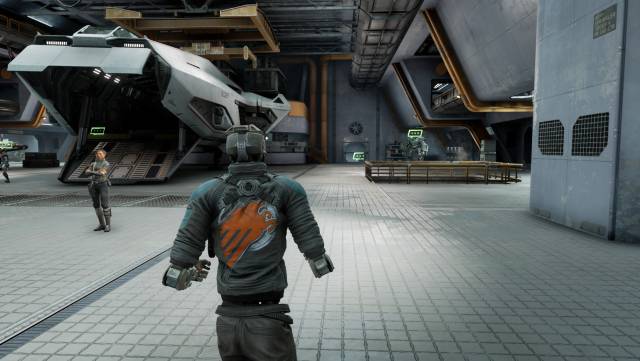
The Reviews is incomplete because we have not been able to test the multiplayer. We will update it when the time comes, but we already advance that Disintegration is a game with an original approach and an excessively simple and limited execution, which does not manage to catch the player or offer great moments. Too many times he falls into tedium, without ever being a disaster, be clear. A game can have errors and irregular elements, but it should avoid indifference, and that ends up happening too many times with what Disintegration proposes.
